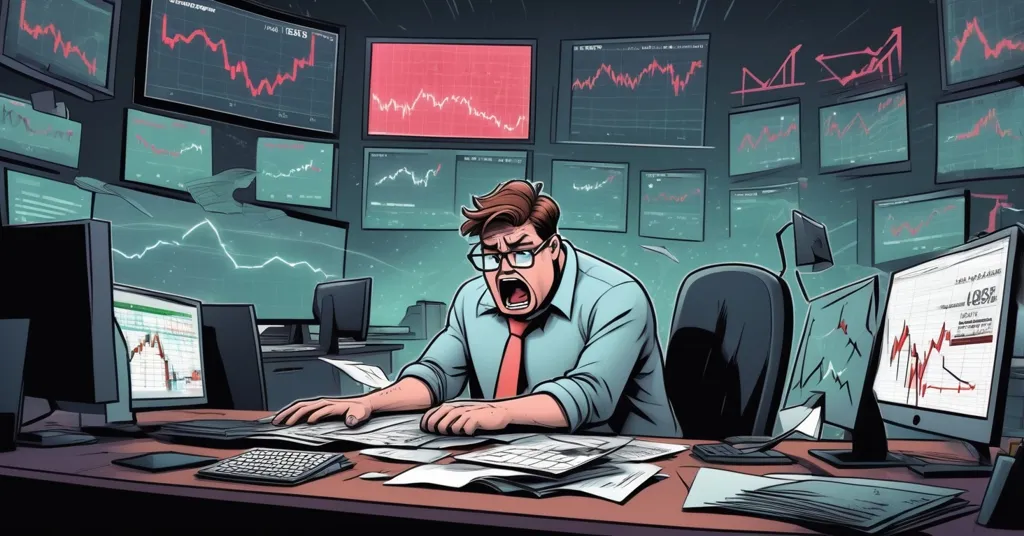XRP Liquidity Traps: Why Selling at the Peak Could Ruin Your Bull Run Gains

XRP Investors Beware: Liquidity Traps Could Torpedo Your Bull Run Dreams
If you’re holding XRP with visions of selling at the peak during the next crypto bull run, brace yourself for a harsh reality check: liquidity shortages on exchanges could leave you with far less than you bargained for. Crypto pundit Diana has raised a red flag that when XRP’s price surges, there might not be enough buyers to match your sell orders, slashing your profits in the blink of an eye.
- Liquidity Nightmare: Exchanges may lack buyers during XRP price spikes, leading to slippage and reduced returns.
- OTC Drain: Big players trade via private over-the-counter deals, siphoning liquidity from public markets.
- Ripple’s Shift: A $1 billion acquisition of GTreasury could lock more XRP away from retail traders.
The Liquidity Crunch: Why Selling XRP at the Top Is a Pipe Dream
Picture this: XRP rockets to $10 after months of hype, and you’re ready to cash out with a fat profit. But when you hit “sell” on your favorite exchange like Coinbase or Kraken, the order fills at a measly $8.50—or worse. This isn’t some random glitch; it’s slippage, a brutal market mechanic where your trade executes at a lower price than expected due to a lack of matching buyers. Diana nails the issue on the head, warning that during a parabolic rally, many exchanges simply won’t have the depth to handle the flood of sell orders at peak value. In seconds, your dream gains can evaporate faster than a shady altcoin scam. For deeper insight into this issue, check out why XRP investors might struggle to sell at the top.
“A lot of exchanges won’t have the liquidity to let XRP holders exit at the market value.” – Diana
For the uninitiated, liquidity refers to how easily an asset can be bought or sold without impacting its price. High liquidity means plenty of buyers and sellers, keeping prices stable during trades. Low liquidity, on the other hand, is like showing up to a sold-out concert with a ticket but no seat—good luck getting what you paid for. XRP, despite its loyal fanbase and ambitious goals, often suffers from thin liquidity on public exchanges, especially compared to giants like Bitcoin. And when everyone rushes for the exit during a rally, it’s chaos—imagine a fire alarm at a packed venue with only one tiny door. That’s the bottleneck retail investors face.
Why XRP Liquidity Sucks More Than Bitcoin or Ethereum
So why does XRP face this problem more acutely than other major cryptocurrencies? A big reason is the way it’s traded by large entities. Banks, hedge funds, and corporations frequently opt for over-the-counter (OTC) trades—private transactions that happen off public exchanges. These deals reduce the amount of XRP available for regular folks like us on platforms where retail trading happens. While Bitcoin boasts a 24-hour trading volume often exceeding $30 billion, XRP typically hovers around $1-2 billion, per CoinMarketCap data. That’s a massive gap in market depth, meaning BTC holders are far less likely to get burned by slippage during a sell-off.
Looking back, XRP’s liquidity woes aren’t entirely new. During the 2017-2018 bull run, when XRP briefly touched $3.40, many retail traders reported struggles to sell at peak prices due to thin order books. Community forums were rife with complaints of orders filling at steep discounts or not executing at all. While hard data from that era is sparse, the anecdotal evidence paints a familiar picture: when XRP goes vertical, retail investors often get the short end of the stick.
Ripple’s Corporate Chess Game: GTreasury and Retail Fallout
Adding insult to injury, Ripple—the company behind XRP—recently dropped $1 billion to acquire GTreasury, a firm specializing in treasury management solutions. In plain speak, these are tools that help businesses manage cash flow and payments efficiently. Ripple’s move signals a deeper push into corporate adoption, aligning with XRP’s core mission of revolutionizing cross-border payments—those slow, costly transfers between countries that traditional banks often botch. While this is a potential win for XRP’s long-term utility, it’s a gut punch for retail traders. More XRP tied up in corporate systems means less available on public exchanges during critical moments like a bull run sell-off.
Though exact figures on how much XRP might shift to corporate use post-acquisition aren’t public, even a modest 10% of its circulating supply—currently around 56 billion tokens—getting locked away could drastically thin out retail liquidity. Ripple already holds billions in escrow, releasing a steady stream monthly (1 billion, with much often returned to escrow), which already fuels debates about supply control. If GTreasury integration accelerates corporate hoarding, the average investor could be left high and dry when trying to sell during a hype-driven spike.
As of now, XRP trades at roughly $2.42, down slightly over the past 24 hours per CoinMarketCap. That’s a stark contrast to the pie-in-the-sky targets some fanboys drool over, often fueled by speculation around Ripple’s legal battle with the SEC or whispers of mass adoption by financial giants. But hype doesn’t fill order books, and Diana’s warning cuts through the noise: liquidity, not sentiment, will decide who wins and loses when the price goes parabolic.
“Those looking to sell at $10 might have their order filled at $8.50.” – Diana
The SEC Wildcard: Regulatory Risks Add to the Mess
Let’s not ignore the elephant in the room: XRP’s ongoing tussle with the U.S. Securities and Exchange Commission (SEC). The lawsuit, which questions whether XRP is a security—a financial asset regulated like stocks—has hung over the project like a dark cloud since 2020. If deemed a security, XRP could face delisting from major U.S. exchanges, tanking its accessibility and price. Conversely, a favorable ruling could ignite a rally as confidence surges. But here’s the kicker: even if the price spikes on good news, liquidity traps could still screw over retail sellers. Regulatory uncertainty only amplifies the chaos, and while we champion freedom from overreaching bureaucrats, some oversight might shield investors from outright scams. XRP’s centralized tendencies, with Ripple pulling many strings, already clash with crypto’s decentralized ethos—yet another reason Bitcoin maximalists smirk at its struggles.
Devil’s Advocate: Could Ripple’s Vision Save XRP Long-Term?
Now, let’s flip the script. While liquidity risks are real, not every rally ends in disaster. XRP’s passionate community argues that sustained institutional adoption—driven by Ripple’s partnerships—could eventually build enough demand to stabilize markets, even during sell-offs. If banks and corporations integrate XRP for cross-border payments at scale, price volatility might ease over time, benefiting retail holders indirectly. From an effective accelerationism perspective, XRP’s potential to turbocharge global finance by flipping the bird at sluggish banking systems is a win for disrupting the status quo, even if retail gets a raw deal short-term.
Bitcoin purists, however, scoff at this. They’ll point out that BTC’s decentralized nature and massive liquidity make it a safer harbor during market storms. They’re not wrong—Bitcoin doesn’t rely on a single company’s corporate maneuvers to dictate its fate. But XRP fills a niche BTC doesn’t touch, targeting payment efficiency over store-of-value purity. Dismissing it outright ignores the messy, diverse reality of this financial revolution. Still, banking on long-term stability while ignoring immediate traps is a gamble most retail investors can’t afford.
Action Plan: How to Protect Your XRP Gains in a Bull Run
Diana isn’t just doomscrolling—she offers hard-nosed advice to navigate this minefield. First, take control by moving your XRP off exchanges into self-custody. Storing tokens in a personal wallet (like a hardware device or secure software wallet) shields you from exchange freezes or hacks during volatile periods. Second, don’t chase the absolute top. Set conservative sell targets—say, $8 instead of $10—to exit before liquidity dries up completely. Third, ditch market orders for limit orders. A limit order lets you specify the exact price you’ll accept, reducing slippage risk, unlike market orders that execute at whatever price the market coughs up (often to your detriment).
“When the altcoin finally goes vertical, the winners won’t be those who timed the top but those who were ready for it.” – Diana
Jake Claver, CEO of Digital Ascension Group, doubles down on the need for preparation, stressing that it’s not just about holding XRP—it’s about having a game plan. From custody to tax strategies to wealth management, failing to prep for a liquidity event could mean fumbling your shot at real gains. In crypto, timing isn’t everything; infrastructure is.
“Without custody, tax strategy, and wealth infrastructure before the liquidity event, many would fumble to generate wealth.” – Jake Claver
Key Takeaways and Questions for XRP Holders
- What are the major liquidity risks for XRP investors during a bull run?
A severe shortage of buyers on exchanges can trigger slippage, forcing you to sell XRP at far lower prices than expected, gutting profits instantly. - How does slippage damage XRP trading gains?
Targeting a sale at $10 per XRP could result in fills as low as $8.50 or worse, eroding gains due to thin market depth during high volatility. - Why is XRP’s liquidity worse than Bitcoin or Ethereum?
Large OTC trades by banks and corporations, plus Ripple’s institutional focus, drain XRP from public exchanges, unlike Bitcoin’s deeper, decentralized market. - How can XRP holders protect their investments in volatile markets?
Secure tokens in self-custody wallets, set conservative sell targets before the peak, and use limit orders to lock in desired prices, dodging market order pitfalls. - Does Ripple’s $1B GTreasury acquisition harm retail XRP traders?
Likely, as it may tie more XRP to corporate payment systems, slashing availability on public exchanges and worsening liquidity during sell-off windows. - Could Ripple’s corporate focus benefit XRP long-term despite liquidity traps?
Possibly, as broader adoption by financial institutions might stabilize XRP’s price over time, even if short-term bull run exits remain a nightmare for retail investors.
XRP holders, don’t sleep on this. The fantasy of selling at the top is tempting, but liquidity traps could turn that dream into a financial horror show. Plan now, stay sharp, and remember: in crypto, preparation often beats prediction. We’re all in on decentralization and financial freedom here, but we’re not peddling delusions—XRP’s path is packed with potential yet littered with pitfalls. Its future hinges on whether centralized control can coexist with crypto’s rebellious soul. Tread carefully, and keep questioning the system.



